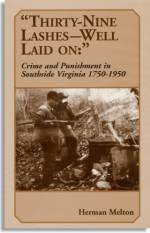
James Anderson, builder of Tomahawk Mill, was a Sergeant in the Pigg River Greys (Company E, 57th Virginia Infantry Regiment). This 1862 photo is provided by Otey Blair.
Sergeant James Anderson was among those Confederate soldiers with Robert E. Lee on that historic day at Appomattox in April of 1865. Like the other thousands with him, he sadly stacked his rifle, wiped away his tears and trudged homeward.
His home was on Tomahawk Creek in Pittsylvania County and his unit was Company I of the 57th Virginia Regiment — better known as the “Pigg River Greys.” They were survivors of Melvern Hill, Second Manassas, Sharpsburg and Gettysburg.
Their most memorable experience came when they found themselves near the point in Pickett's famous charge on Little Round Top at Gettysburg.
Anderson then resumed his life as a tobacco farmer at the family home on Tomahawk Creek. The dark day sof the Reconstruction, the Panic of 1873 and the arduous life on the farm soon convinced the ex-infantryman that there was a better way to earn a living.
General Lee's surrender was 22 years past when James Anderson filed a petition with the Pittsylvania County Court to erect a grist mill on land he inherited from his father, Watt Otey Anderson, on Tomahawk Creek.
His request was granted in the Spring of 1887, and the energetic veteran threw up a wooden dam; erected a grist and sawmill and founded the community of Tomahawk.
His brother Charles, built a store on family land year the mill. Charles' wife, Nannie Pigg Anderson, became the postmistress of the newly founded Tomahawk Postoffice when it began operations in the back of Anderson's Store in 1893.
Tomahawk became a thriving community with Anderson's Mill as its center. Moreover, it was ex-Sergeant Anderson who found time along the way to help found Greenpond Baptist Church nearby.
For the next hundred years, the sturdy old mill survived floods, wars and economic depressions while grinding wheat and corn for its neighbors along the Tomahawk.
James Anderson passed from the scene in 1908 and was succeeded by his son Otey, who kept the mill humming for another 67 years.

Tomahawk Mill during busy season in 1925. The owner of the mill at that time was Otey Anderson. (Photo courtesy Otey Blair.)
After graduation as an engineer from Virginia Tech in Blacksburg, Otey had to forego a career in industry to take over the reins at Anderson's Mill.
He eventually modernized the mill machinery and erected the rock and concrete dam that stands today some 50 yards above the mill. Otey managed to secure a contract with the Lane Company in Altavista to provide thousands of pounds of flour annually which was used to manufacture glue for use in furniture making.
He was a “millwright's miller” who tried very hard to keep alive the institution of water-powered milling and even set the mill's production record by grinding 26,000 bushels of grain in one year. It was the Otey Anderson who gave jobs to scores of youngsters and bread for the tables of many unfortunate families during the Great Depression.
Try as he might, he was unable to cope with the changes in the eating habits of Americans who preferred their bread purchased in packages.
Electricity succeeded water-power, and like thousands of such mills across the U.S., Anderson's Mill experienced a decline well before Otey dressed his last millstone. He was 95 at his death in 1975.
Some millers who worked there were O.C. Betterton, Renford Thornton, L.J. Arrington, Larry Witcher and Ronnie Shelton. After the latter almost lost his life in a mill injury in 1985, an account of the incident appeared in Reader's Digest under the by-line of ace editor and reporter, Henry Hurt. The mill became, briefly, the most famous in America.
It was renamed Tomahawk Mill by its present owner, Walter Crider, an Anderson descendent, who converted the mill into a promising winery in 1988.
It is open on Saturdays (March-November). Tomahawk Mill Wines have enjoyed good customer response and a trip there on County Route 649 is time well spent.
A portion of the mill has been converted into a tasting room, and one can sample Tomahawk Mill wine amid memorabilia of a survivor of Pickett's Charge at Gettysburg.
Sgt. Anderson made history there and also here, when he erected his mill on Tomahawk Creek over a century ago.

Pittsylvania's Eighteenth-Century Grist Mills

Pittsylvania's Nineteenth-Century Grist Mills

Thirty-Nine Lashes, Well Laid On

Pittsylvania County's Historic Courthouse

Clement: History of Pittsylvania County

Fitzgerald: Pittsylvania: Homes and People of the Past

Hurt: Eighteenth Century Landmarks of Pittsylvania County

Hurt: An Intimate History of the American Revolution in Pittsylvania County

Dodson: Footprints from the Old Survey Books

Byrd: Histories of the Dividing Line Betwixt Virginia and North Carolina

Jones: Tales About People in a Small Town
This website is sponsored by Mitchells Publications and the Sims-Mitchell House, hosts of online guides to Pittsylvania County, Chatham, and Danville, Virginia.
Copyright © 1991 Herman E. Melton.